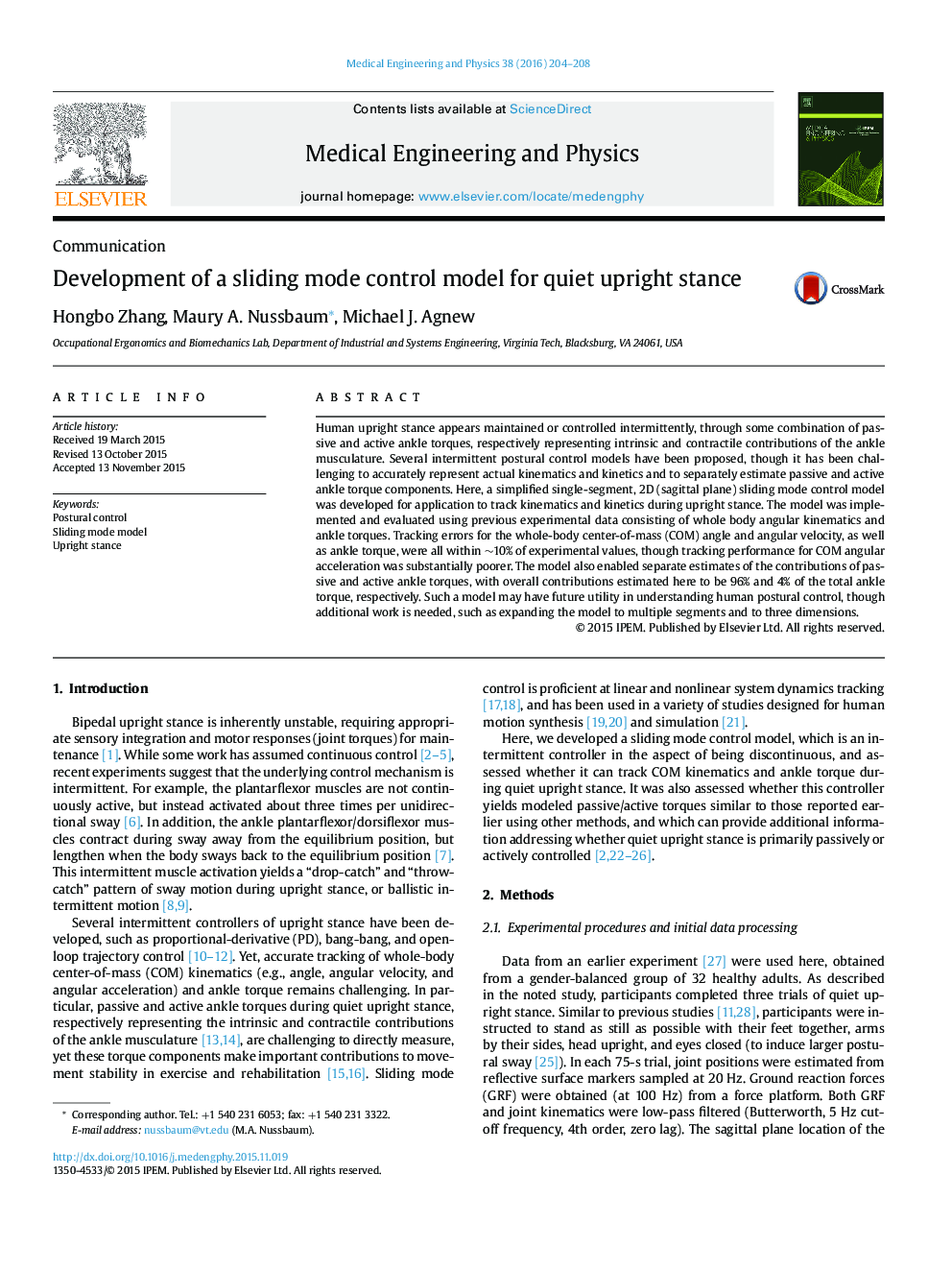| Article ID | Journal | Published Year | Pages | File Type |
|---|---|---|---|---|
| 875643 | Medical Engineering & Physics | 2016 | 5 Pages |
Human upright stance appears maintained or controlled intermittently, through some combination of passive and active ankle torques, respectively representing intrinsic and contractile contributions of the ankle musculature. Several intermittent postural control models have been proposed, though it has been challenging to accurately represent actual kinematics and kinetics and to separately estimate passive and active ankle torque components. Here, a simplified single-segment, 2D (sagittal plane) sliding mode control model was developed for application to track kinematics and kinetics during upright stance. The model was implemented and evaluated using previous experimental data consisting of whole body angular kinematics and ankle torques. Tracking errors for the whole-body center-of-mass (COM) angle and angular velocity, as well as ankle torque, were all within ∼10% of experimental values, though tracking performance for COM angular acceleration was substantially poorer. The model also enabled separate estimates of the contributions of passive and active ankle torques, with overall contributions estimated here to be 96% and 4% of the total ankle torque, respectively. Such a model may have future utility in understanding human postural control, though additional work is needed, such as expanding the model to multiple segments and to three dimensions.
